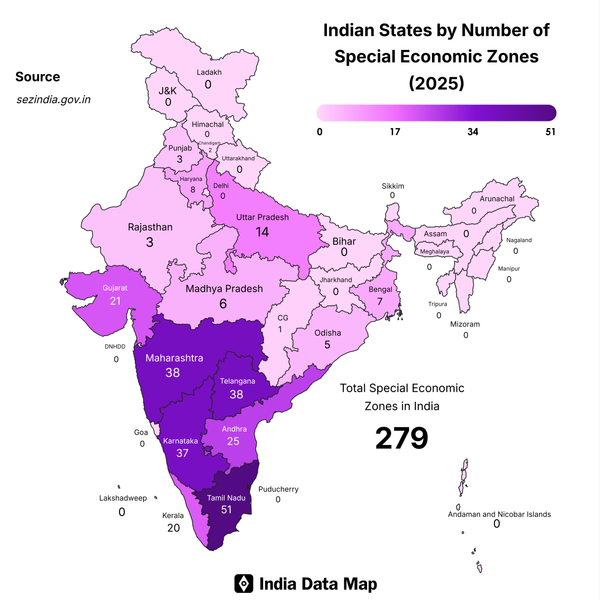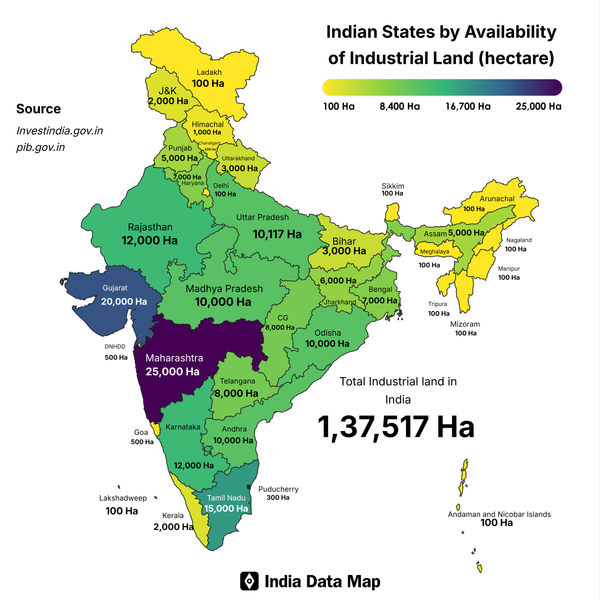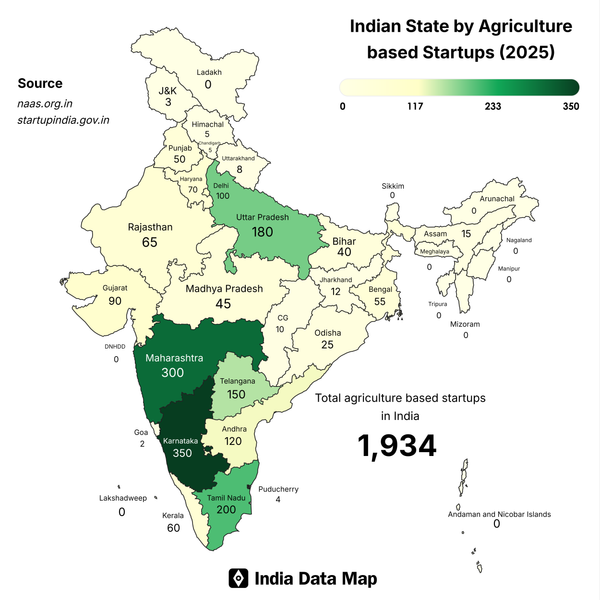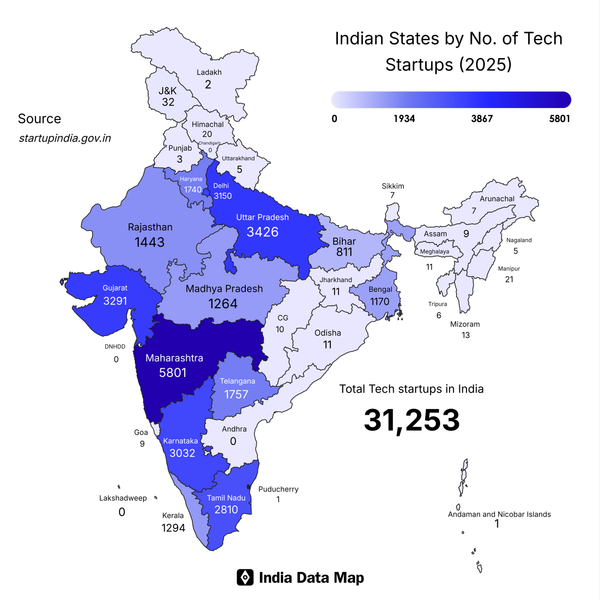Map: Indian States by Crime Rate (2025)
Explore India's 2024 crime rates by state & UT, from Kerala's high of 1586.1 to Lakshadweep's low of 2.77. Key facts & insights reveal urban-rural divides.
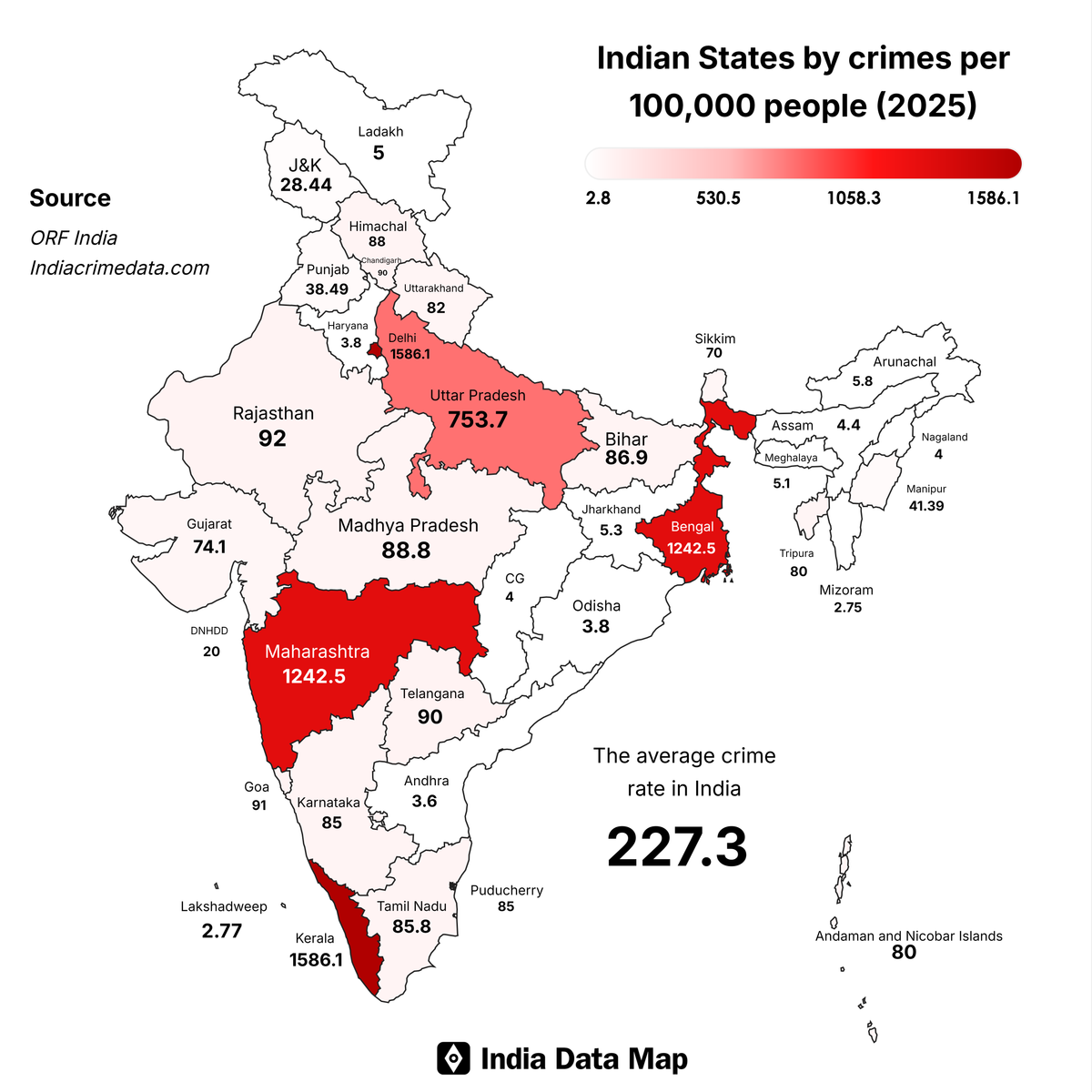
India, characterized by its rich diversity of 28 states and 8 union territories, offers a multifaceted landscape regarding crime rates.
Utilizing the most recent data, mainly from 2024, we have ranked these areas based on crime rate (crimes per 100,000 population) to reveal significant trends and unexpected findings.
This examination illuminates the differing safety profiles throughout the country, ranging from vibrant urban centers to tranquil island territories.
| Rank | State/Union Territory | Crime Rate (per 100,000) |
|---|---|---|
| 1 | Kerala | 1586.1 |
| 2 | Delhi | 1586.1 |
| 3 | Maharashtra | 1242.5 |
| 4 | West Bengal | 1242.5 |
| 5 | Uttar Pradesh | 753.7 |
| 6 | Rajasthan | 92.0 |
| 7 | Goa | 91.0 |
| 8 | Telangana | 90.0 |
| 9 | Chandigarh | 90.0 |
| 10 | Madhya Pradesh | 88.8 |
| 11 | Himachal Pradesh | 88.0 |
| 12 | Tamil Nadu | 85.8 |
| 13 | Karnataka | 85.0 |
| 14 | Puducherry | 85.0 |
| 15 | Bihar | 86.9 |
| 16 | Uttarakhand | 82.0 |
| 17 | Andaman & Nicobar | 80.0 |
| 18 | Tripura | 80.0 |
| 19 | Gujarat | 74.1 |
| 20 | Sikkim | 70.0 |
| 21 | Manipur | 41.39 |
| 22 | Punjab | 38.49 |
| 23 | Jammu & Kashmir | 28.44 |
| 24 | Dadra & Nagar Haveli and Daman & Diu | 20.0 |
| 25 | Arunachal Pradesh | 5.8 |
| 26 | Jharkhand | 5.3 |
| 27 | Meghalaya | 5.1 |
| 28 | Ladakh | 5.0 |
| 29 | Assam | 4.4 |
| 30 | Chhattisgarh | 4.0 |
| 31 | Nagaland | 4.0 |
| 32 | Haryana | 3.8 |
| 33 | Odisha | 3.8 |
| 34 | Andhra Pradesh | 3.6 |
| 35 | Mizoram | 2.75 |
| 36 | Lakshadweep | 2.77 |
Key Facts
National Average: The overall crime rate across the states and union territories of India is roughly 227.3 crimes for every 100,000 individuals, derived from a straightforward average of the reported statistics. This number underscores the considerable differences among various regions.
Highest Crime Rates: Kerala and Delhi lead the rankings, each reporting a concerning 1586.1 crimes per 100,000 individuals. Maharashtra and West Bengal are not far behind, both at 1242.5, indicating a significant prevalence of crime in these areas.
Lowest Crime Rates: Lakshadweep (2.77) and Mizoram (2.75) exhibit the lowest crime rates, which can be attributed to their small populations and relatively secluded locations.
Urban vs. Rural Divide: Urban areas such as Delhi, Maharashtra, and Kerala show markedly higher crime rates, likely due to their dense populations and economic inequalities. Conversely, smaller states like Nagaland (4.0) and rural regions like Mizoram report lower crime figures.
Uttar Pradesh’s Burden: With a crime rate of 753.7, Uttar Pradesh emerges as a significant factor in India’s crime data, largely due to high rates of theft and assault.
Fascinating Insights
Kerala and Delhi’s Common Ground: In spite of their distinct characteristics—Kerala’s verdant scenery compared to Delhi’s metropolitan expanse—both regions report the highest crime rates.
This phenomenon may be linked to Kerala’s elevated reporting rates, bolstered by high literacy and awareness levels, alongside the metropolitan issues faced by Delhi, such as theft and cybercrime.
Tourism and Criminal Activity: Goa, exhibiting a crime rate of 91.0, is notable among smaller states. The significant influx of tourists may lead to increased property crimes, a trend frequently observed in economies reliant on tourism.
Disparities Among Union Territories: The exceptionally high crime rate in Delhi sharply contrasts with Lakshadweep’s remarkably low rate of 2.77. This significant disparity highlights the impact of population density and governance frameworks on crime trends.
Low-Crime States in the Northeast: States such as Mizoram, Nagaland, and Arunachal Pradesh (5.8) consistently achieve low crime rankings, likely due to robust community connections and reduced urban pressures, although Manipur’s elevated rate (41.39) indicates ongoing political instability.
Inconsistencies in Data: The application of per capita crime rates for certain states (e.g., Andhra Pradesh at 3.6) in contrast to broader crime statistics for others (e.g., Kerala at 1586.1) points to possible discrepancies in reporting practices, which may distort public perceptions of safety.
Conclusion
The crime rate landscape in India for 2024 presents a nation characterized by contrasts, with urban areas struggling with elevated crime levels, whereas smaller, less populated regions experience a greater sense of safety.
States such as Kerala and Delhi encounter distinct challenges, while the elevated crime rate in Uttar Pradesh necessitates focused interventions. In contrast, low-crime regions like Lakshadweep and Mizoram provide valuable insights into community-based safety initiatives.
Grasping these trends is essential for both policymakers and citizens as India maneuvers through its intricate socio-economic structure.

